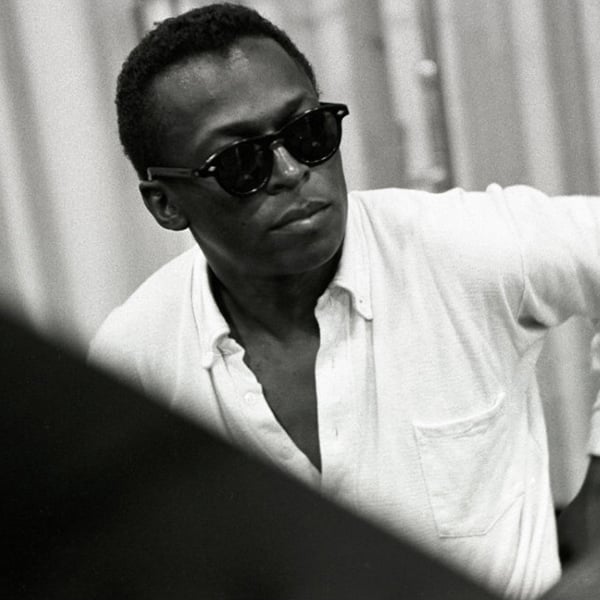
Behind every great man—goes the old saying—there’s a great woman. Behind Filles de Kilimanjaro, and also on its cover, is a woman who greatly influenced Miles. They were married briefly in 1968, the year the album was recorded, in June and September. She was 23, Miles was 42. Betty Mabry was her name when they met, a model with musical plans—she later recorded as Betty Davis in the early 1970s. Her taste in music was as up-to-the-date as her clothing sense and she left her mark. Out went Miles’ Italian suits and loafers, replaced by leather shirts, scarves, and high-heel boots. He began to listen to Jimi Hendrix, James Brown, Sly Stone, and the Chambers Brothers. Betty knew most of them personally; she even wrote a song for the last group.
Filles de Kilimanjaro was the result of Miles listening and returning to tighter song forms and clearer melodies, while keeping with the new mix of sounds he had debuted on Miles In The Sky: trumpet and saxophone with Fender Rhodes electric piano, electric bass, and drums. The two albums work hand-in-hand that way. The styles of 1968—soul, rock, electric blues—were filtering through his music: Filles is rich in slinky R&B bass lines, bubbling drum grooves, and subtle, dance-like patterns on the Rhodes; Hancock’s able handling of what it could do—texturally, dynamically—already makes the instrument seem like it was made for him.
There are catchy unison parts that sound like improvisations; check the first two minutes of the title track. Shorter’s playing remained abstract, rich in texture and Miles solos grew more vocal-like—lyrically direct. Easier to understand. This was not jazz that wanted to call itself jazz. Whether it was the trumpeter’s idea or Columbia Records, Filles on its cover offered an alternative name to describe the music: “Directions In Music by Miles Davis.”
Filles catches the quintet in transition: three of the tracks—“Touts de Suite,” “Petits Machins (Little Stuff)” and the title track—represent Miles’ last session the Second Great Quintet. Both Hancock and Ron Carter departed in the summer of 1968; Chick Corea—a keyboardist of reputation from Boston—and bassist Dave Holland, whom Miles encountered in London, joined that September and played on “Frelon Brun” and “Mademoiselle Mabry.” Both played electric and impressively, all the tracks seem to be of a set. “No amount of track-by-track description here can begin to convey the beauty and intensity,” wrote Rolling Stone at the time. “There are five songs, but really they fit together as five expressions of the same basic piece, one sustained work…”
That Rolling Stone—the voice of the rock generation—was paying attention speaks well of Miles’ cross-generational appeal, and also why many in the jazz audience felt a little betrayed. Betty’s efforts had worked. Miles’s music, appearance, and reputation brought in yet another generation of fans; Filles de Kilimanjaro was a gateway album for many, with greater portals to follow.
While Miles received credit for all tunes on Filles, Gil Evans’ fingerprints are easy to discern on the album, many melodies are his though his name did not appear on the album. Two pieces of evidence: the primary line of “Petits Machins” later became “Eleven” in Gil Evans’ band of the 1970s, while “Mademoiselle Mabry” borrows a chord progression from Jimi Hendrix’s “Wind Cries Mary”—the guitarist a new discovery for both Miles and Evans.









